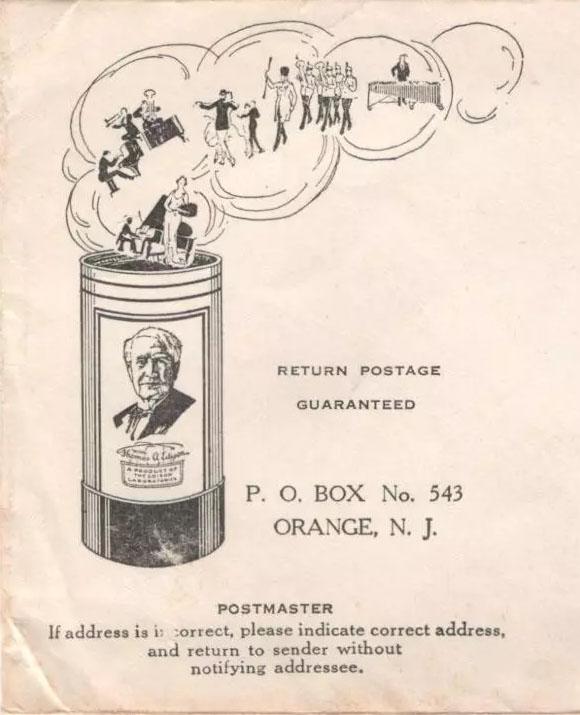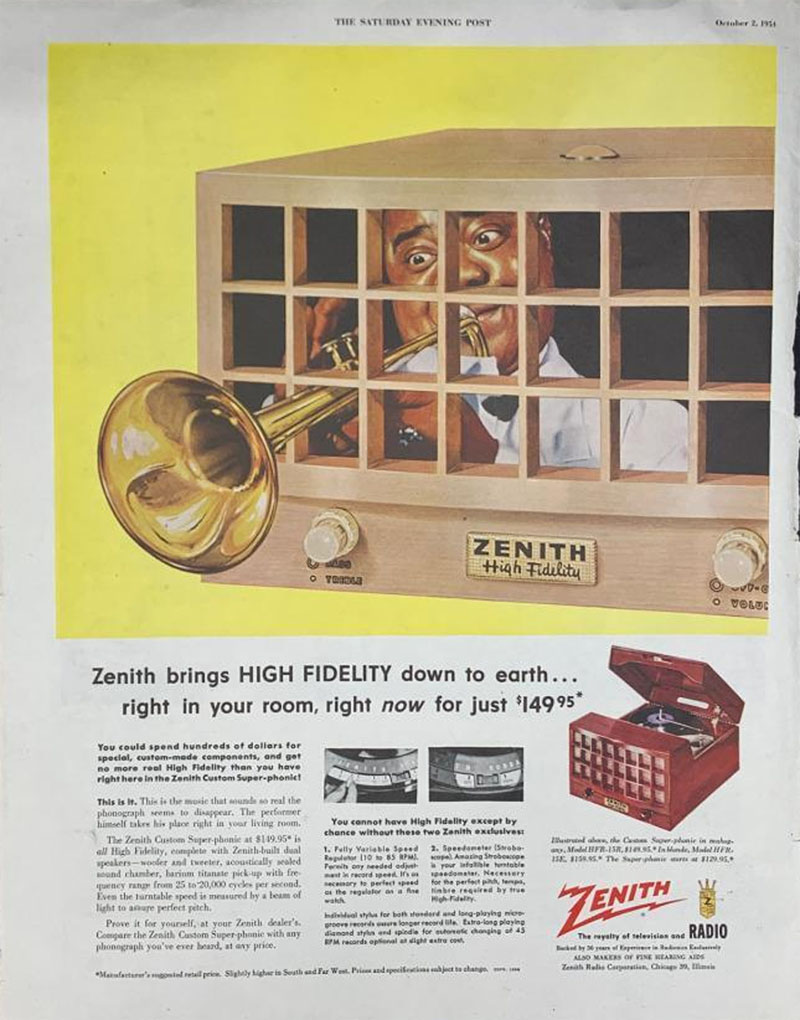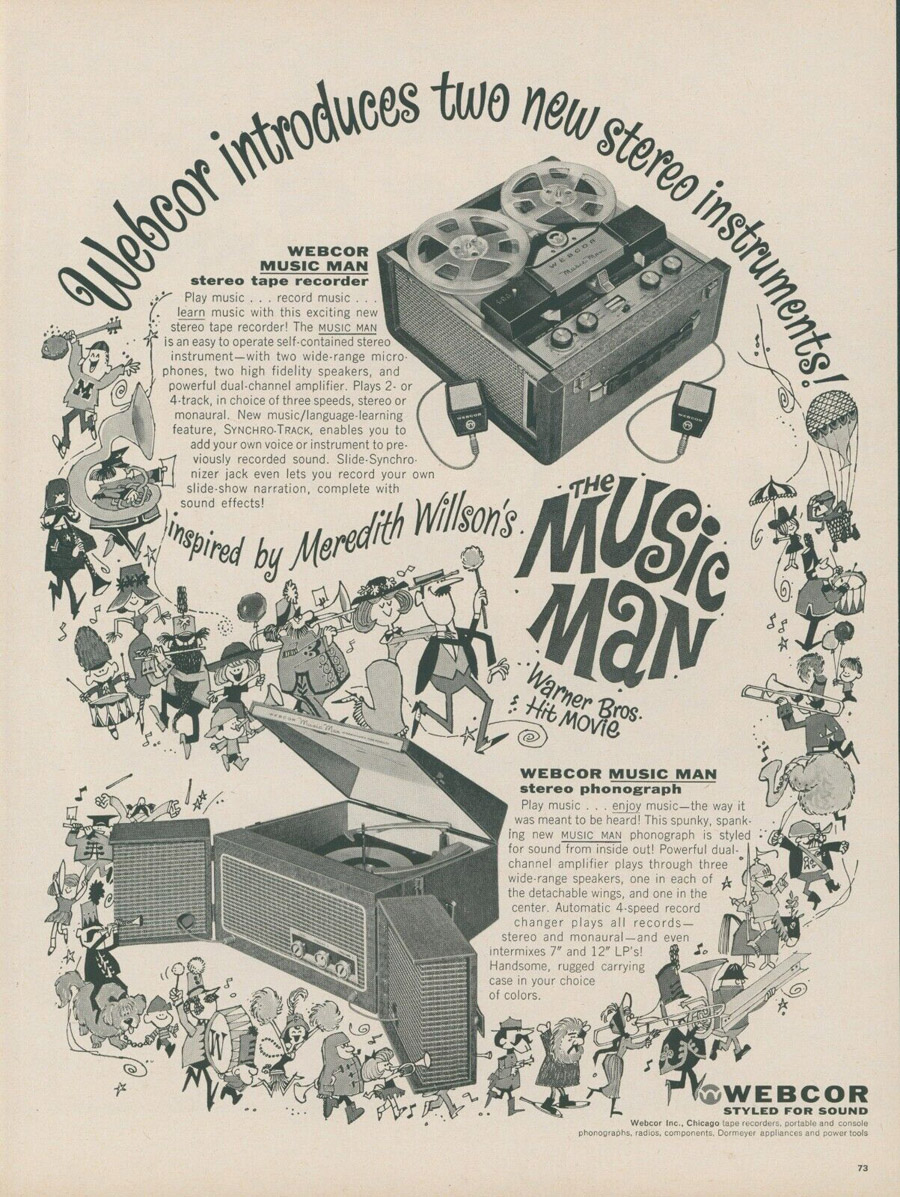Artists
Inside the Horn
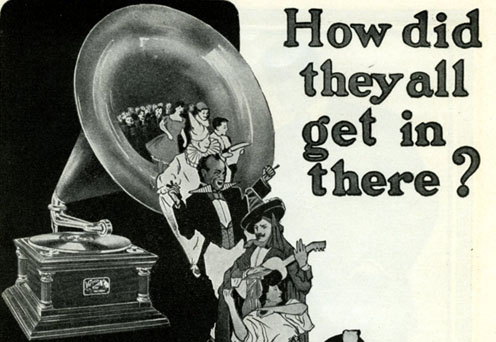
One of the early advertising
images to depict the relationship between artists and recorded sound
was to have the artists inside horns or emerging from the horn as
if the sounds being heard were actually performers coming out of
the horn.
In later cabinet model
machines the artists would come out of the doors of the phonograph
which controlled the volume, and often onto a stage.
Artists could also stand
and perform on records or float above the machine as visions
of a performance or the spirit of music.
The following are advertising
examples of artists inside the horn or emerging from horns and cabinets.
.
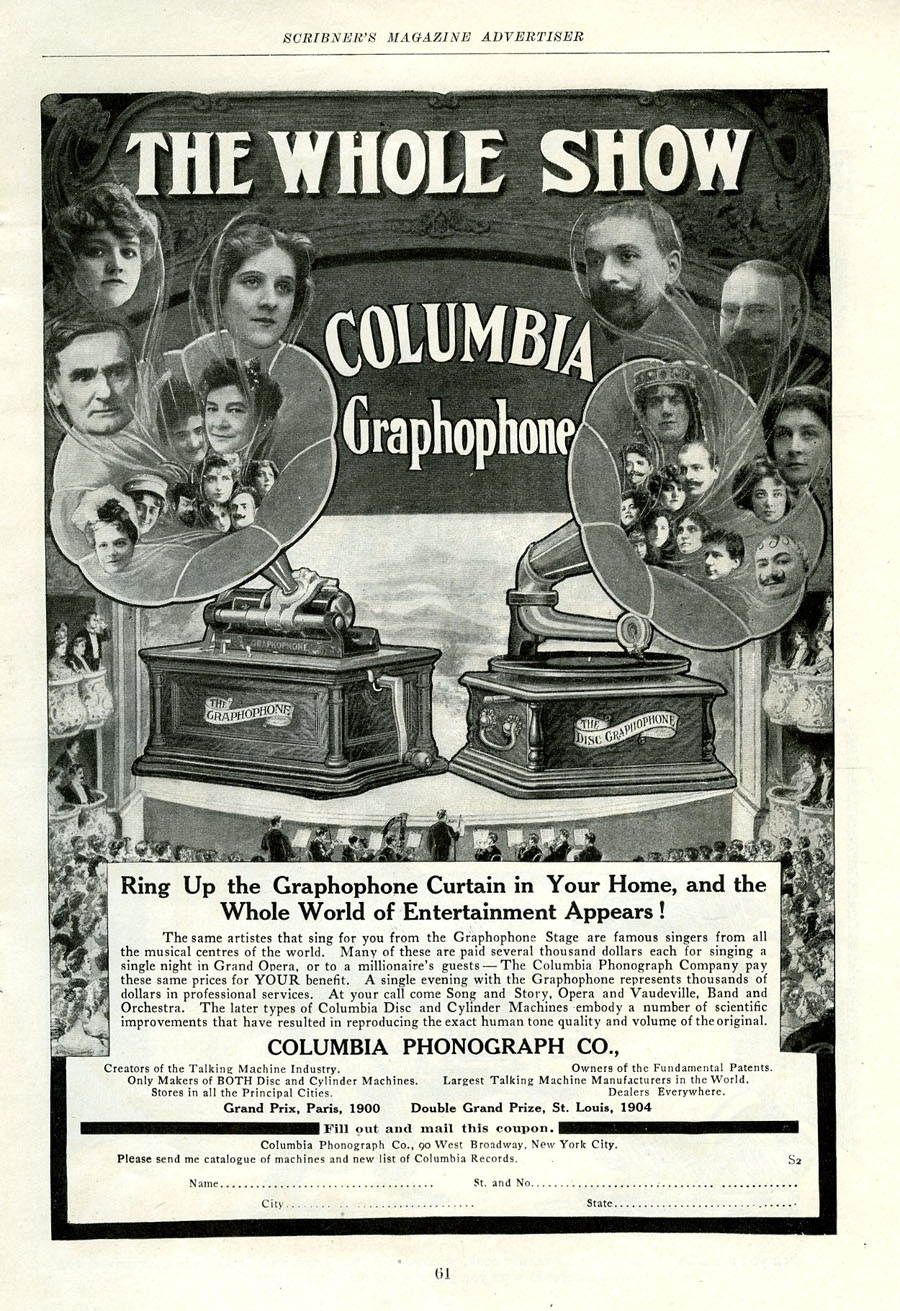
Scribner's Magazine,
1906 (PM-0929)
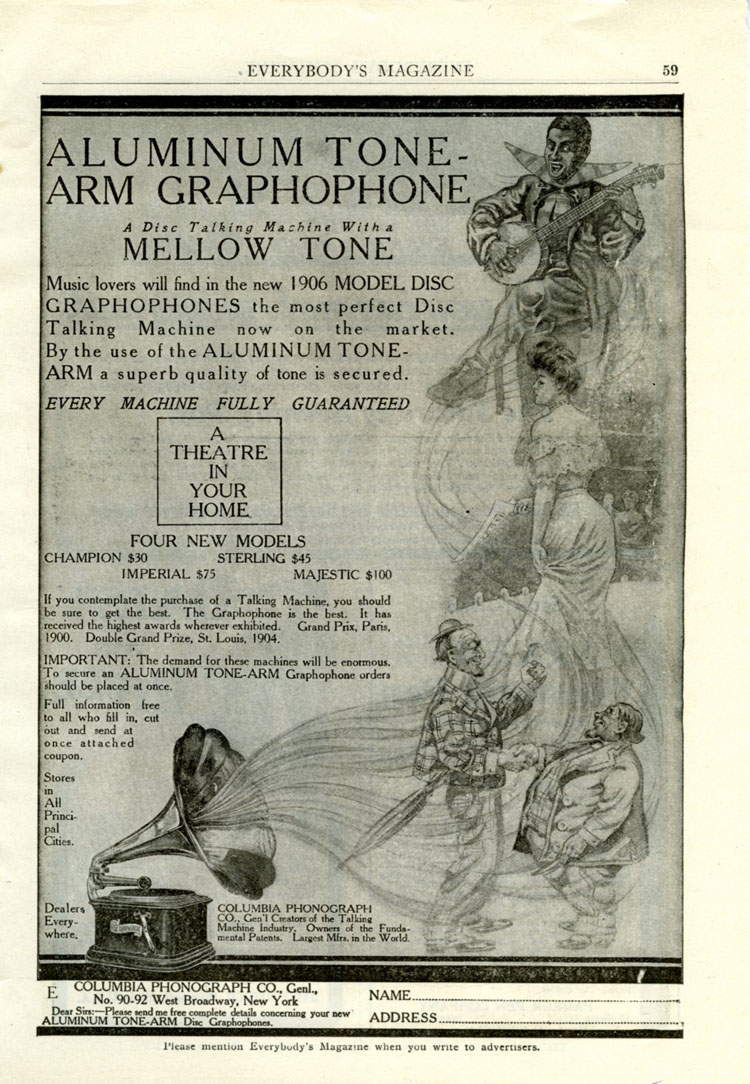
Columbia with a Mellow
Tone, Everybody's Magazine, 1905 (PM-1015)
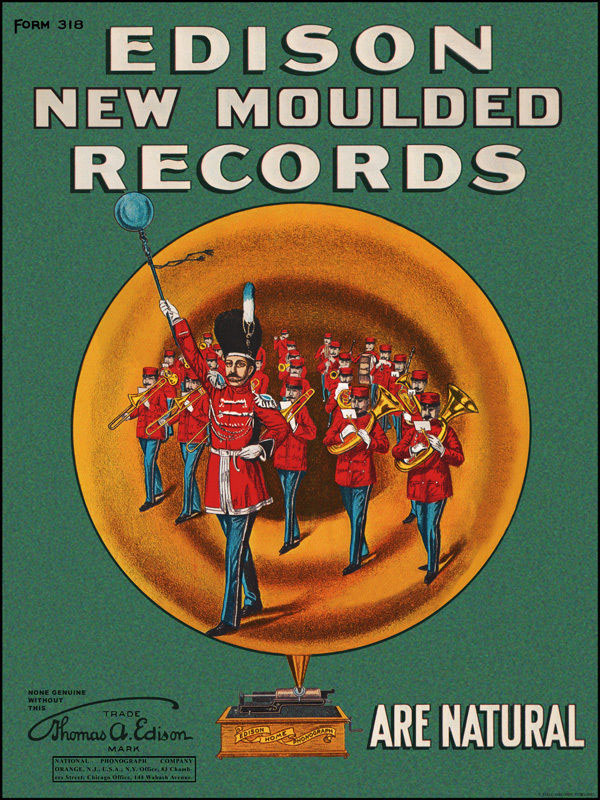
Edison Poster Form 318,
c. 1901 (PM-1344)
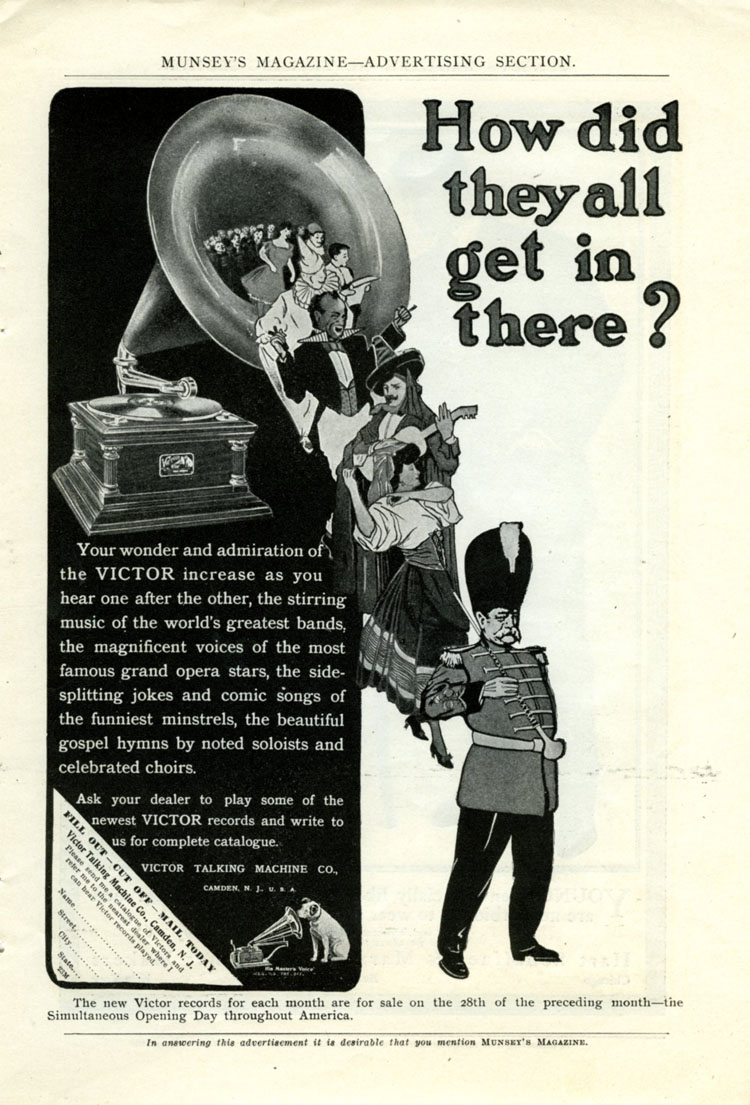
Munsey's Magazine,
1907 (PM-0985)
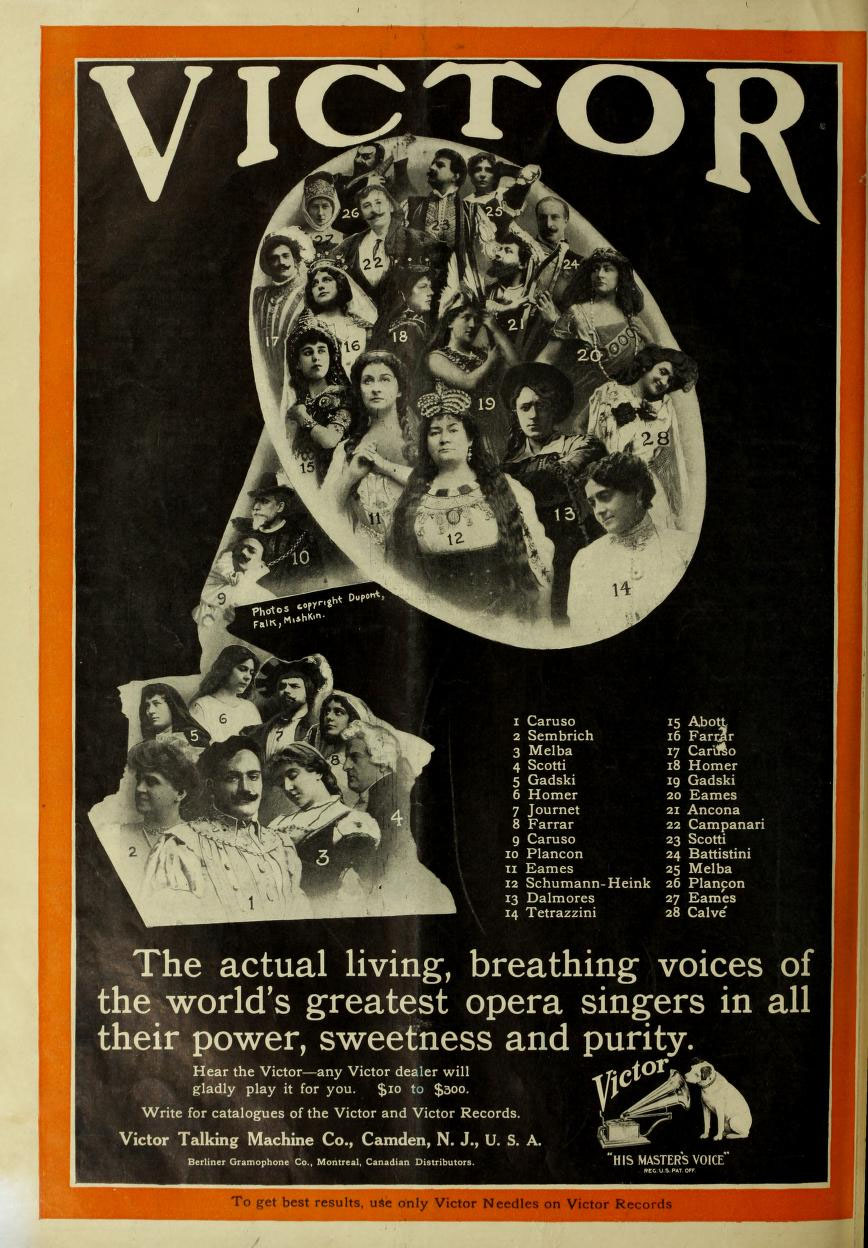
Colliers, November
7, 1908
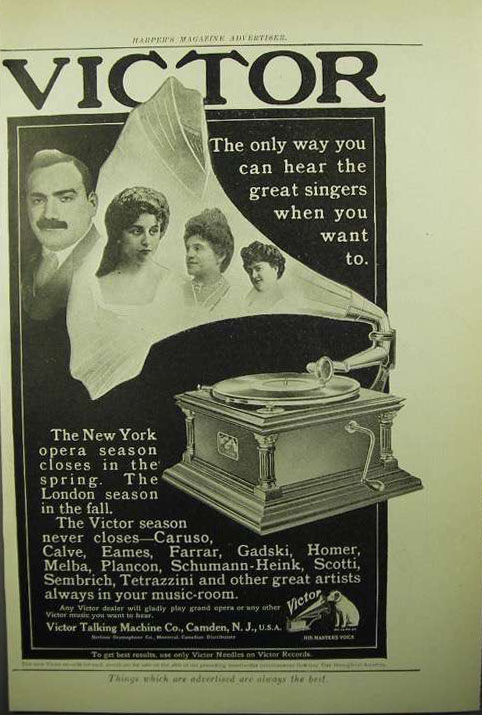
Farrar and Schumann-Heink,
Harper's Magazine, 1908
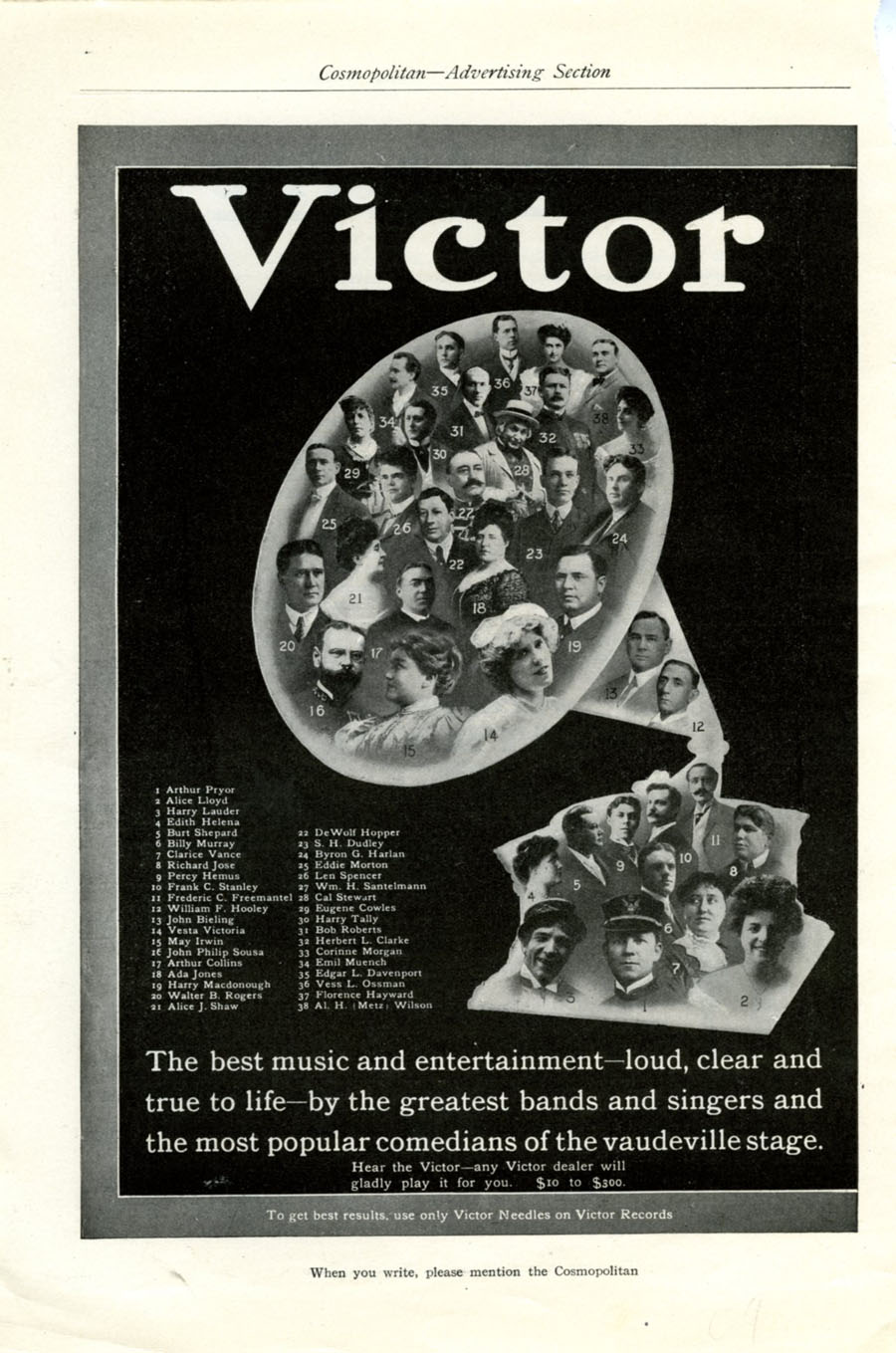
Cosmopolitan, 1909
(PM-0992)

"All of this charming
music gently floats from the Victor and Victor-Victrola, just as
clear and natural as it comes from the lips of the sings and the
instruments of the musicians." The Saturday Evening Post,
1911 (PM-2036)
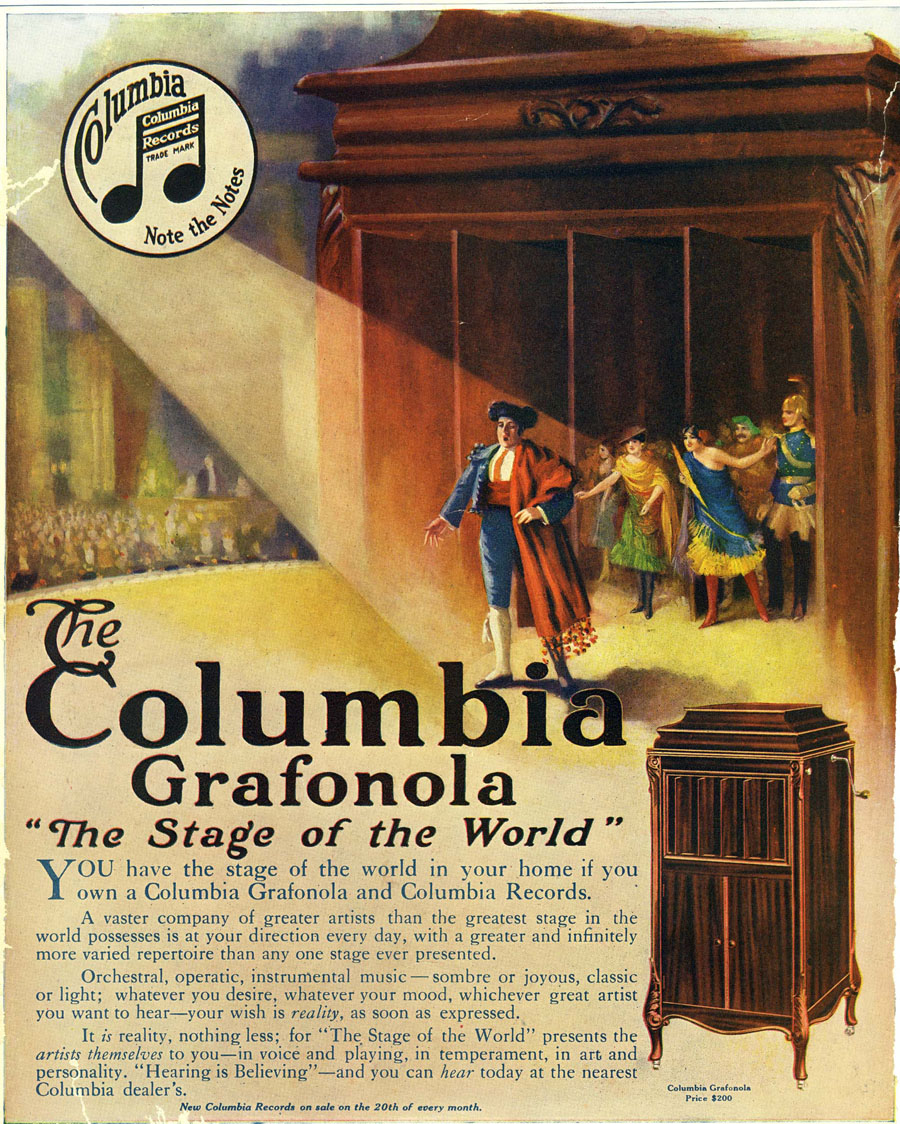
Columbia Grafonola, 1916
(PM-0879)
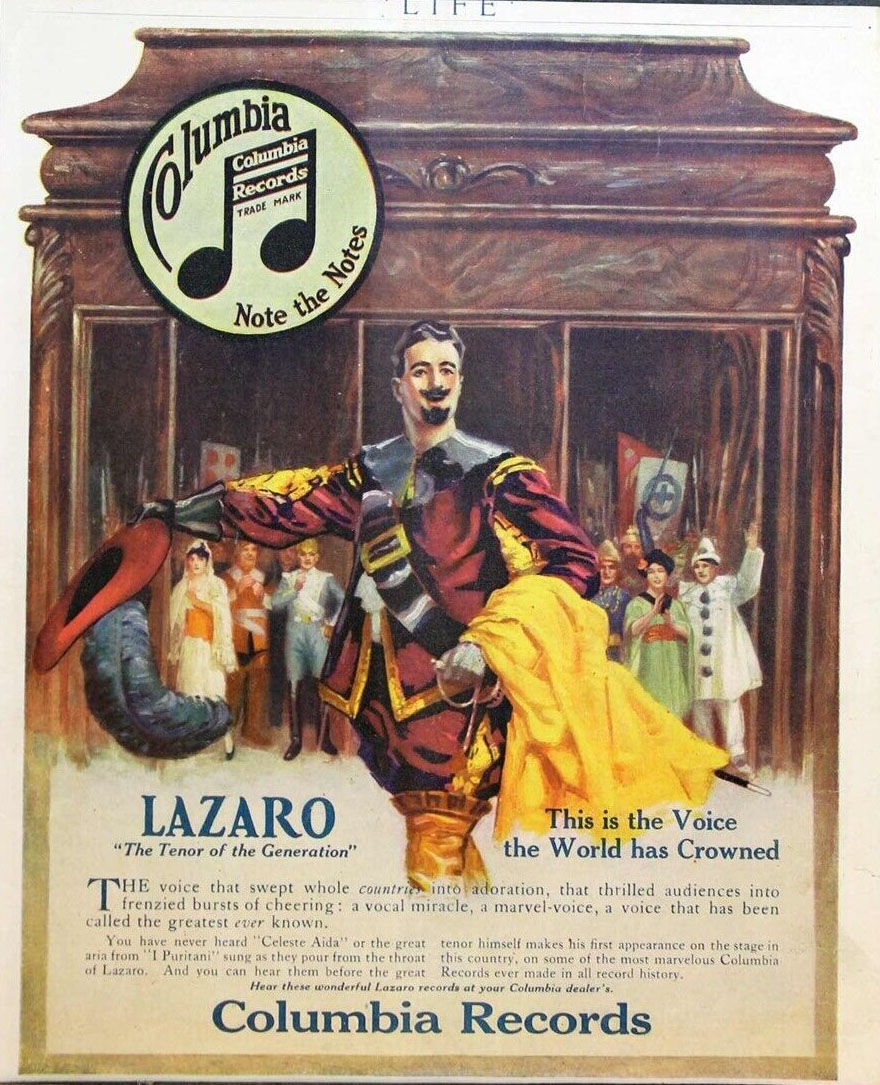
Columbia Grafonola, c.
1918 (PM-2156)
.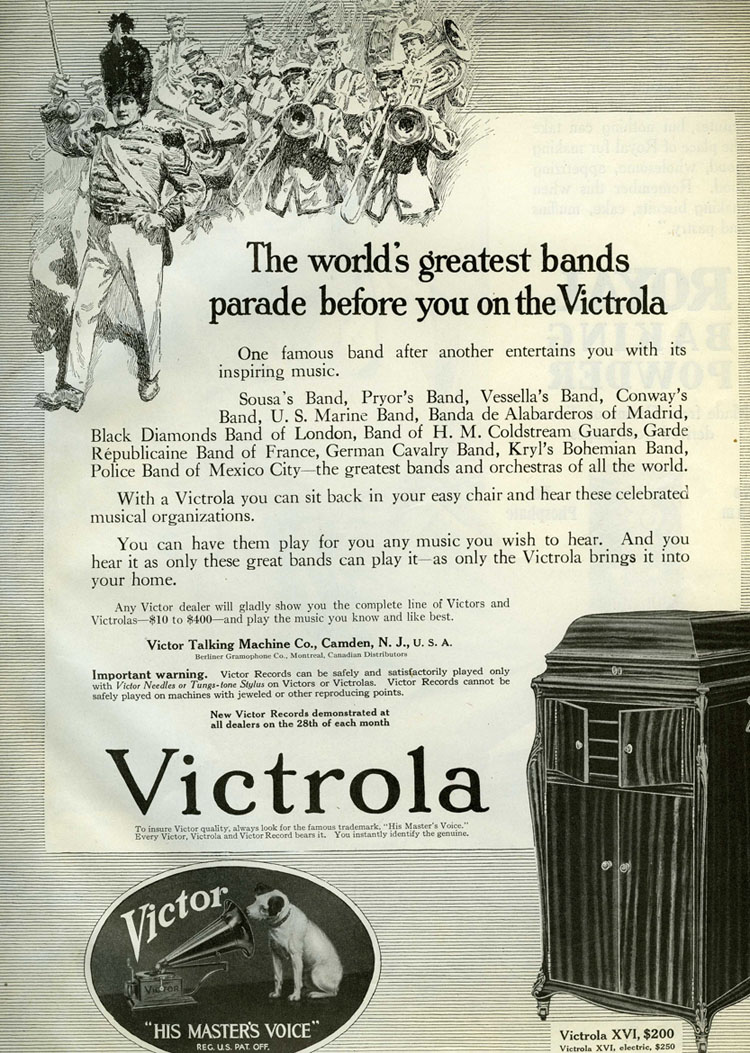
"The world's greatest
bands parade before you on the Victrola." McClure's, 1916
(PM-2031)
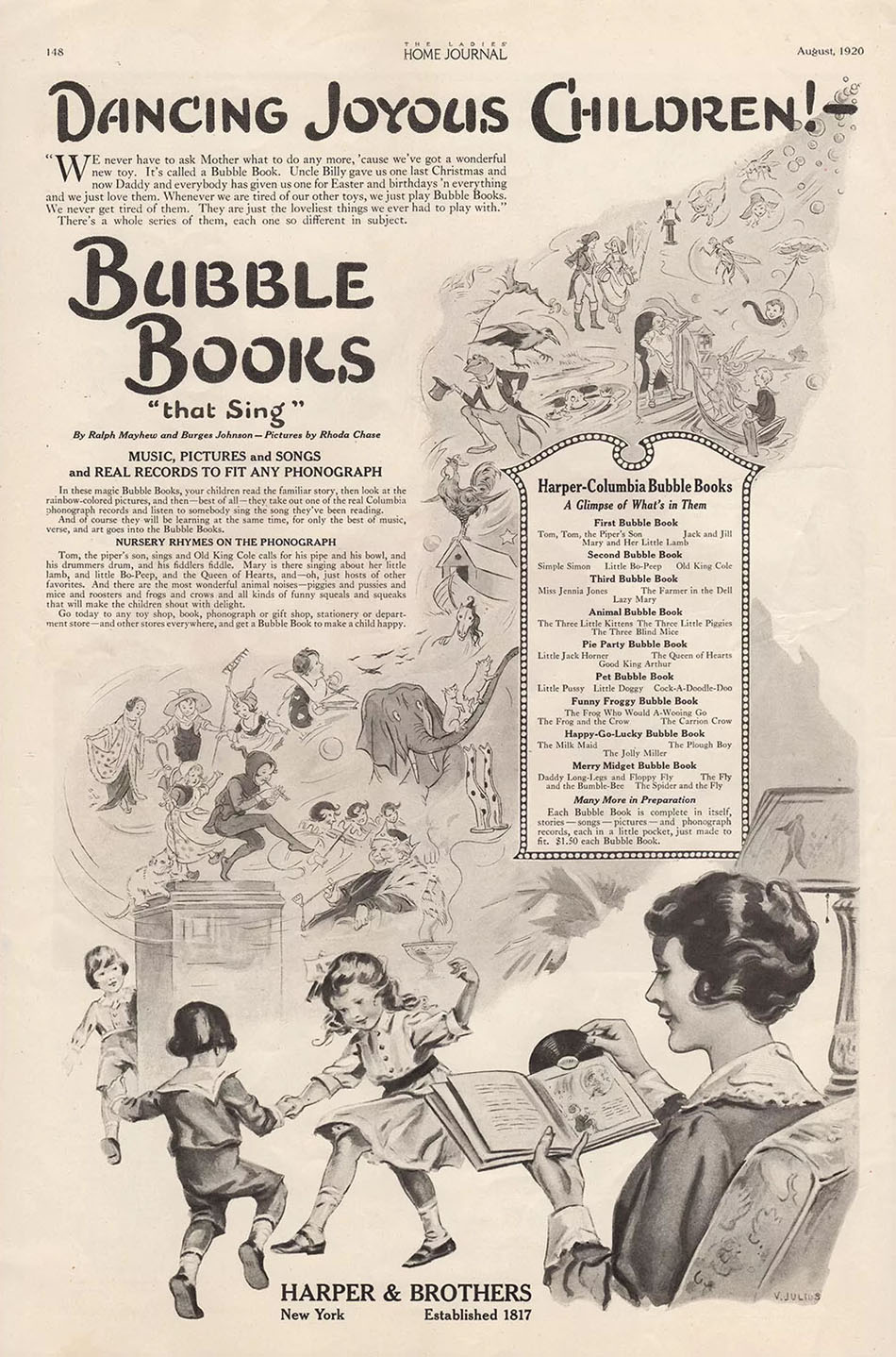
Bubble Books "that
sing". The Ladies' Home Journal, August 1920
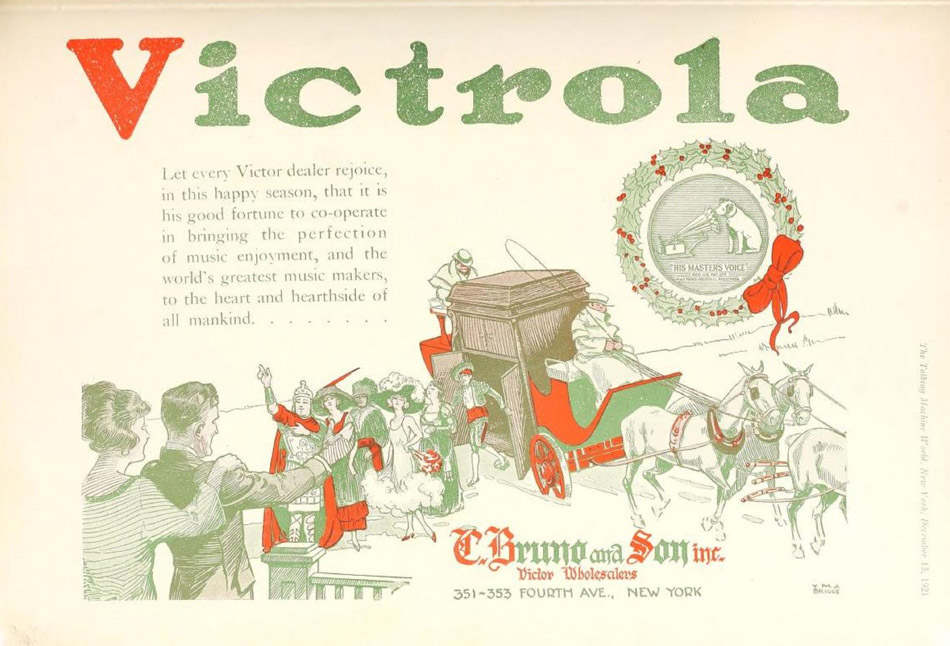
"The world's greatest
music makers" come to your hearthside. The Talking Machine
World, December 15, 1921
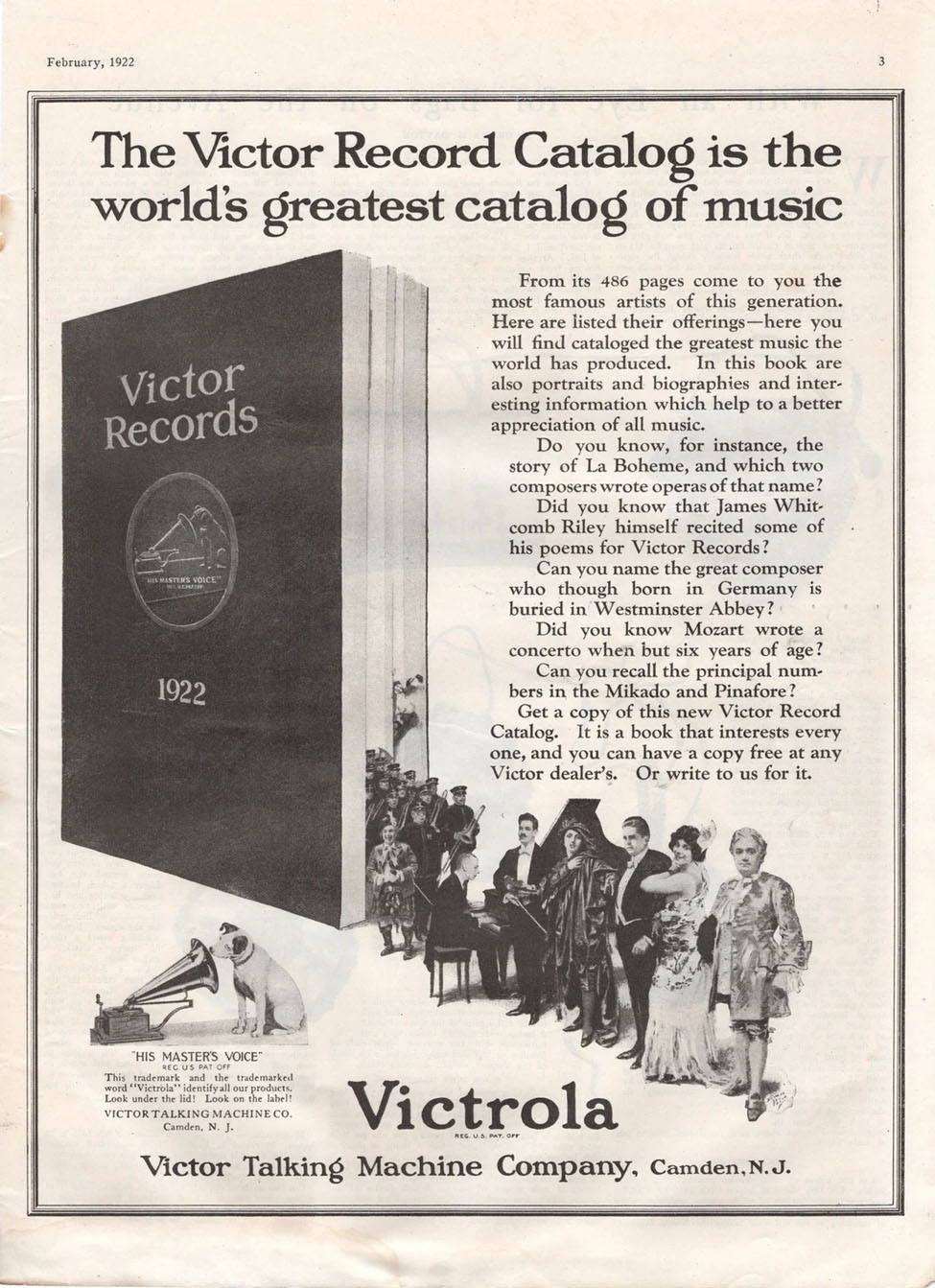
Artists emerging from
Victor Records Catalog, February 1922
Miniature performers
were another variation of artists coming out of horns and machines.
This
1921 Victrola ad featured miniature artists who seemingly lived
in the machine or at minimum would appear when a record was to be
played.
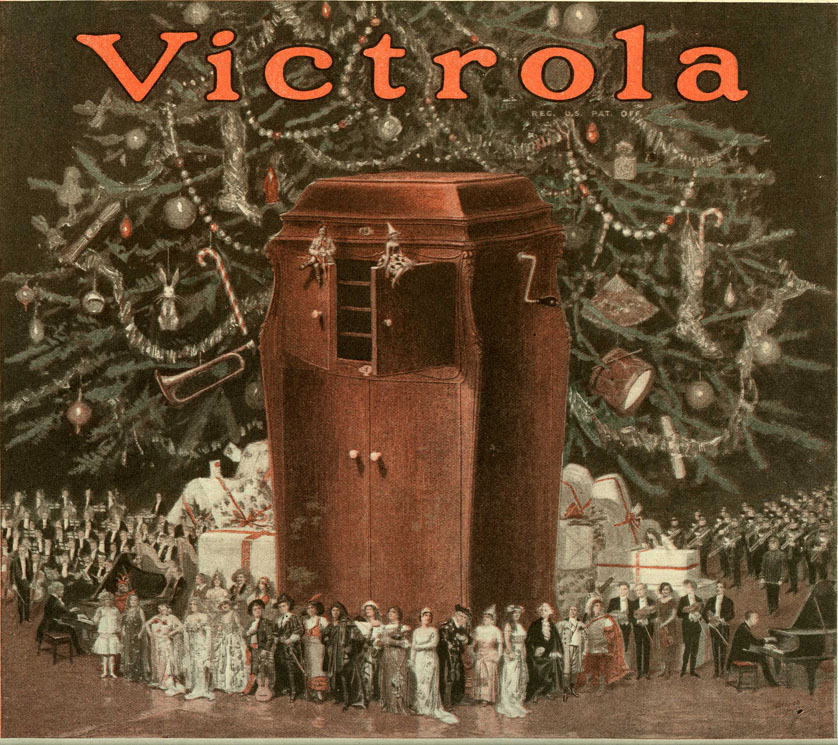
Victrola
Christmas ad, December 1921, The Delineator (PM-2029)
Small performers, apparently
hidden inside the phonograph, was how the Edison Phonograph ads
"The Acme of Realism" and "Looking for the Band"
portrayed the source of music, even if no miniature performers were
actually shown.
The 1901 ad of the little
boy ready to chop open the phonograph to find the source of the
band was simply another way of promoting a recurring advertising
theme that recorded sounds were the same as actual artists performing
for you and indistinguishable from living voices and live performances
of music.
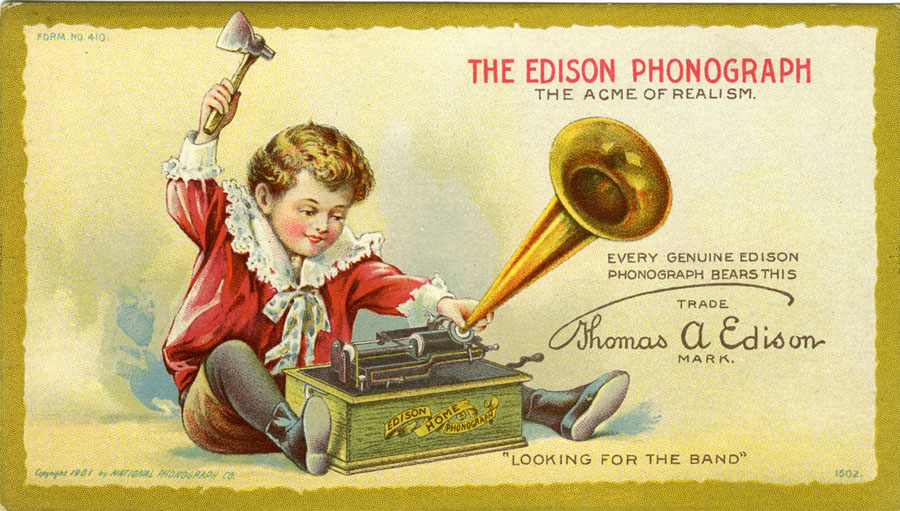
Edison Form 410, 1901
(PM-0262)
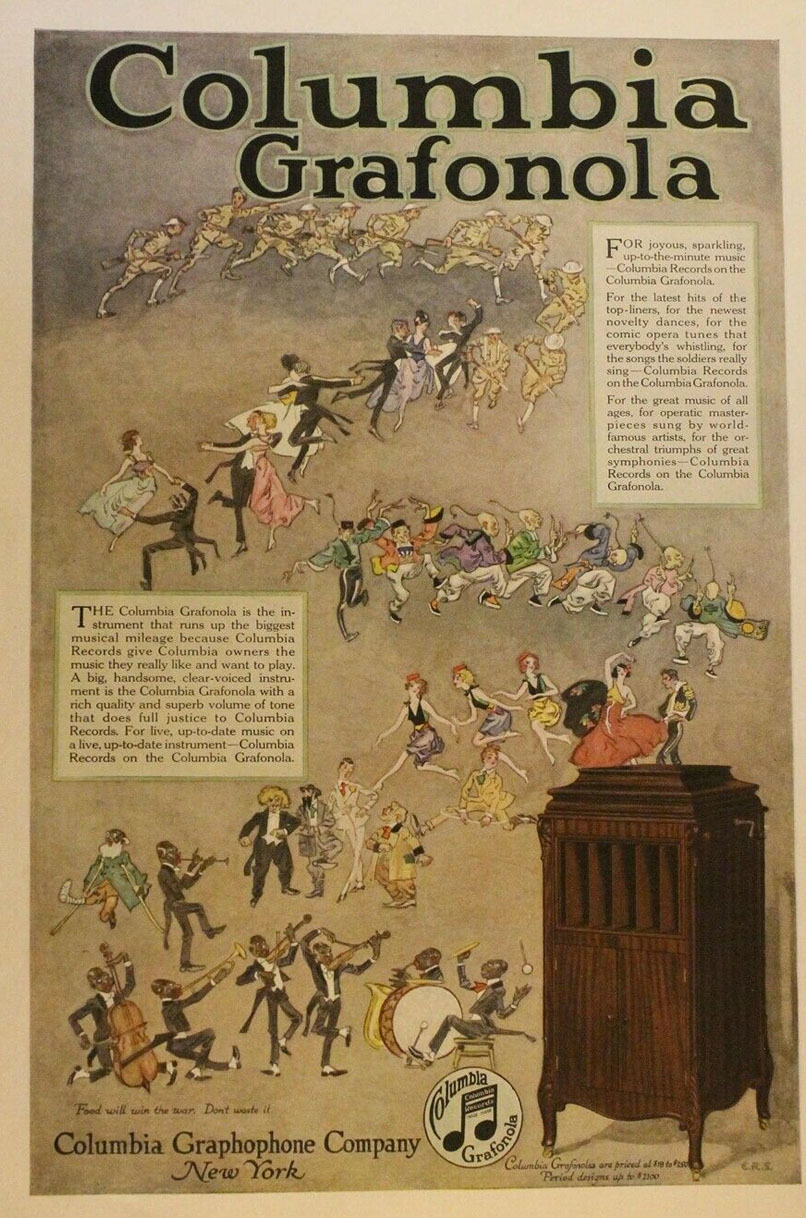
"For joyous, sparkling, up-to-the
minute music -- Columbia Records on the Columbia Grafonola,"
1918 (PM-1949)

"The Columbia Grafonola
brings the best music of all lands and all ages into the friendly
intimacy of your own home. " 1918 (PM-2139)
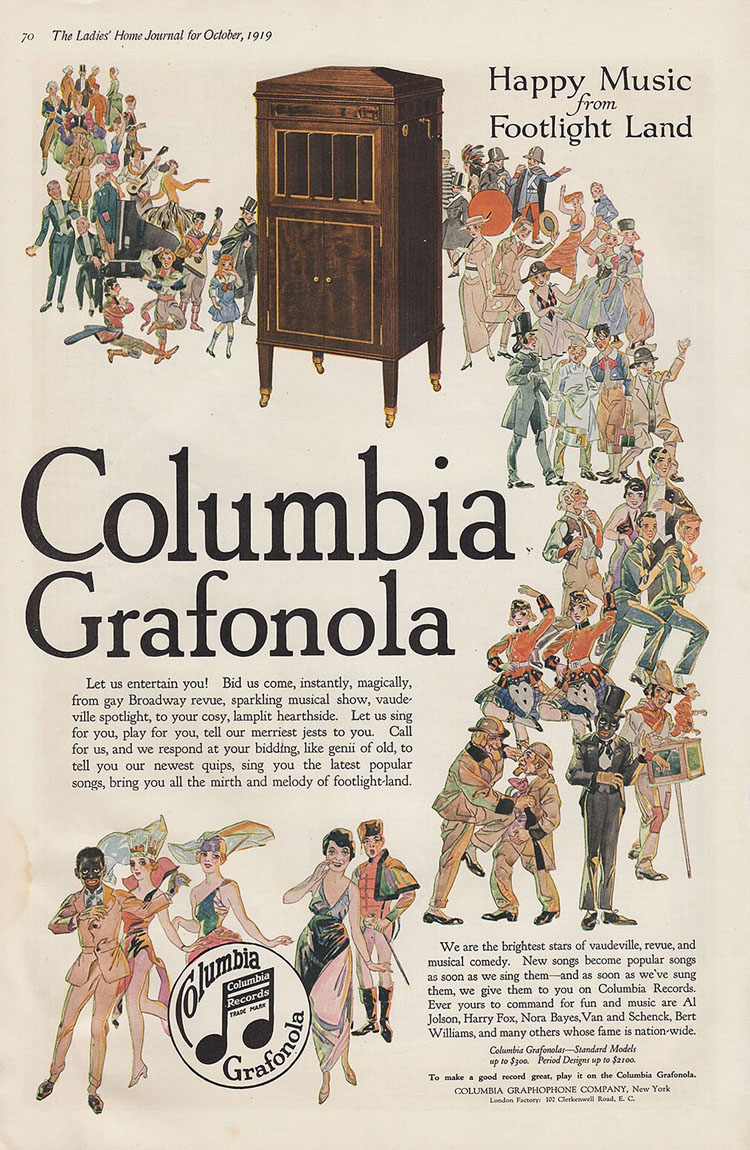
Let us entertain you!
Columbia Grafonola, 1919
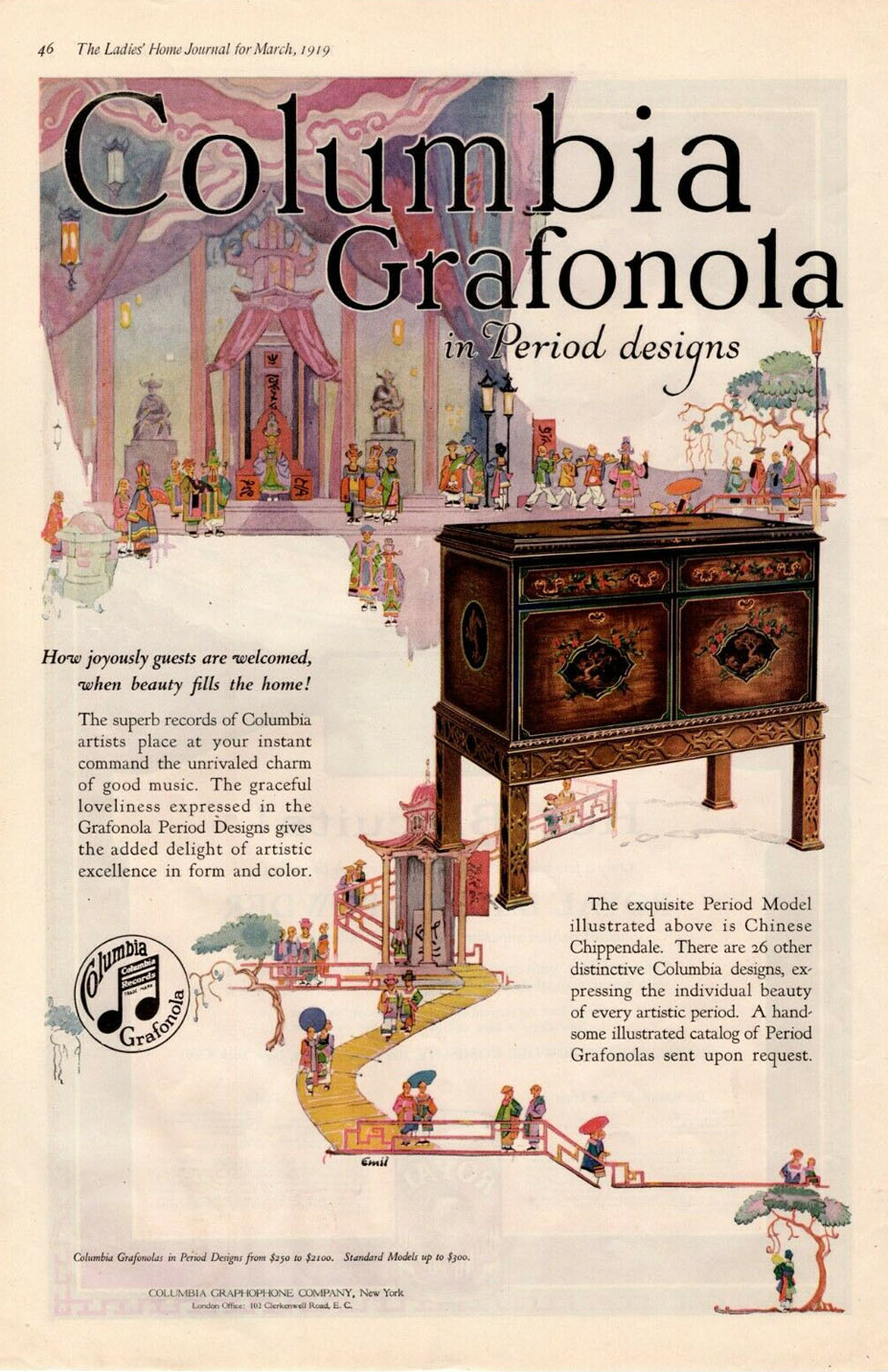
The superb records of
Columbia artists place at your instant command the unrivaled charm
of good music." The Ladies' Home Journal, 1919
Radio ads later displayed
this same phenomenon of the band emerging from the radio's horn
(in this case the source of music is from a phonograph record).
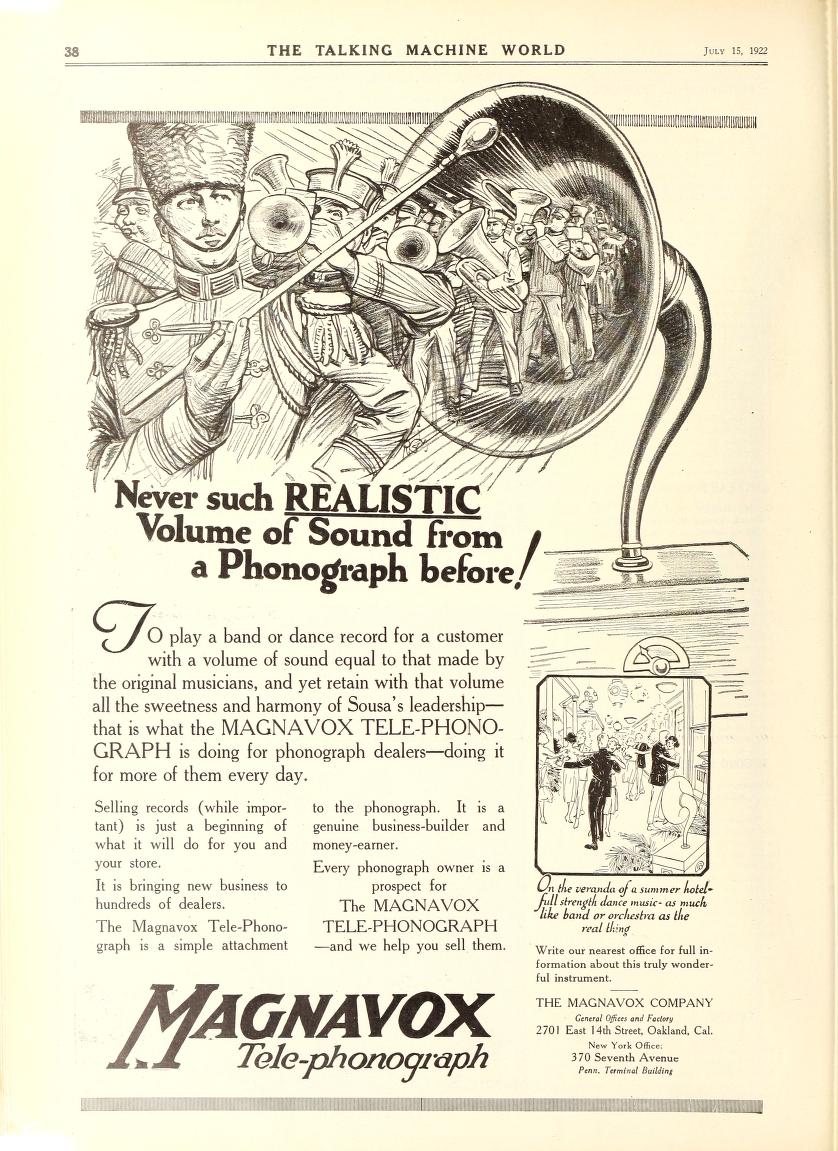
Never such REALISTIC
Volume of Sound from a Phonograph before! The Talking Machine World,
July 1922
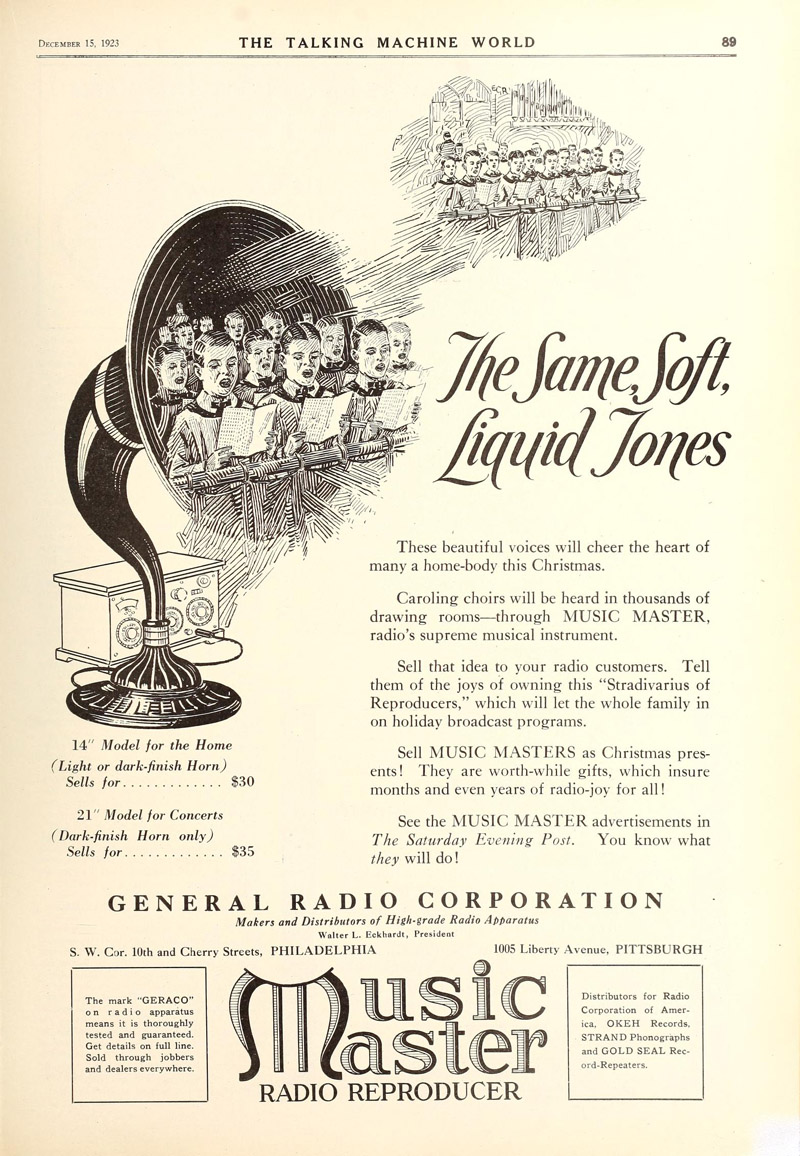
Music Master, The
Talking Machine World, December 15,1922

Atlas Loud Speaker Natural
Reproduction. "A Record!," 1924
"There is no difference
between the Atlas Re-Production and the actual music in the
broadcasting studio."
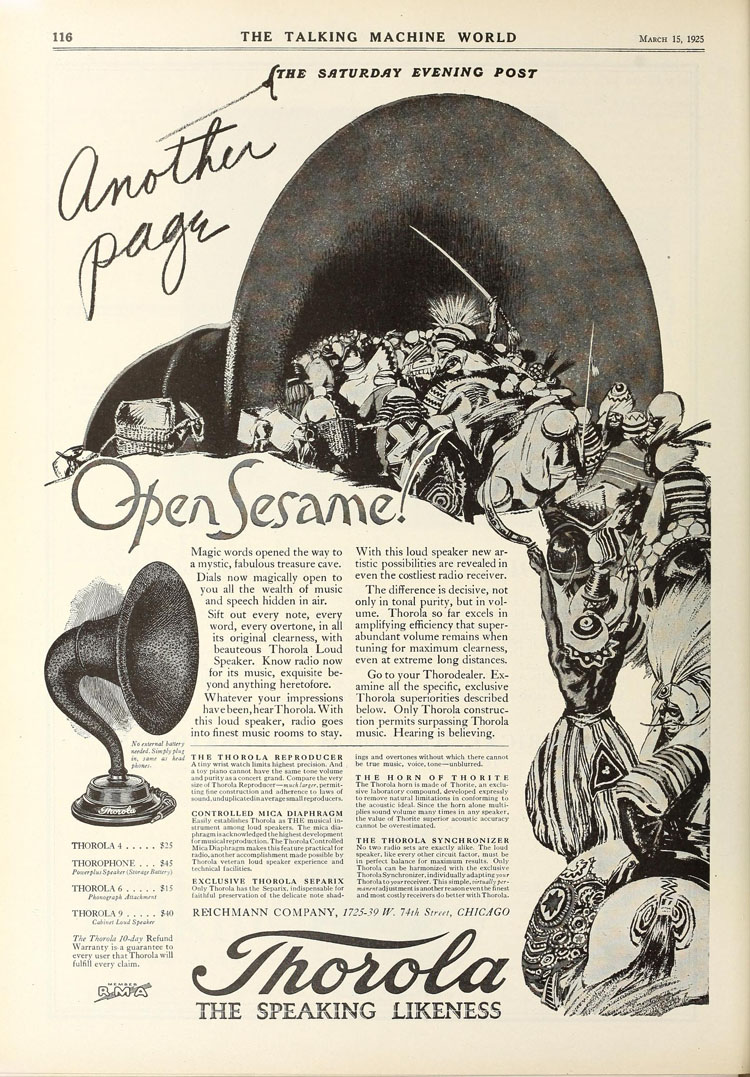
"Open Sesame,"
Thorola Loud Speaker, The Talking Machine World, March 15,
1925
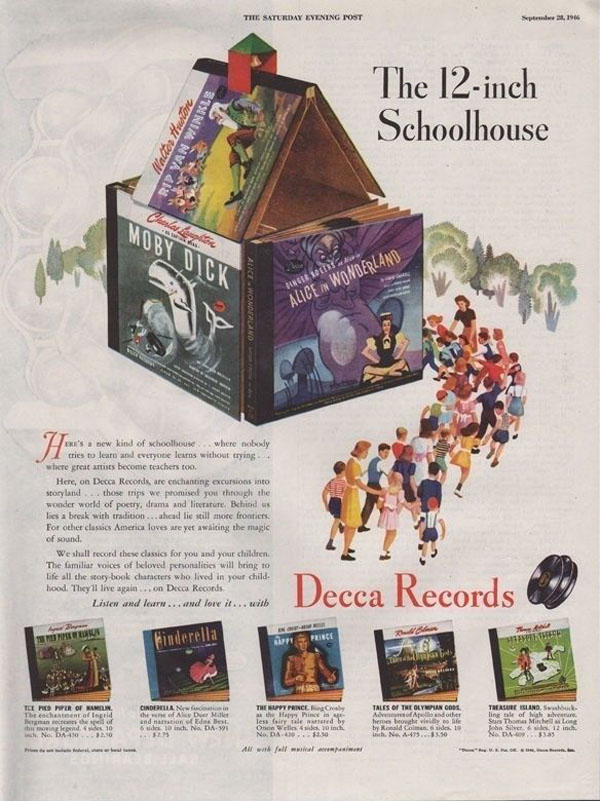
The Saturday Evening
Post, September 1946
A variation of artists
emerging from horns and phonographs to perform is this Decca Records
ad where children enter the albums to hear artists, music and stories.
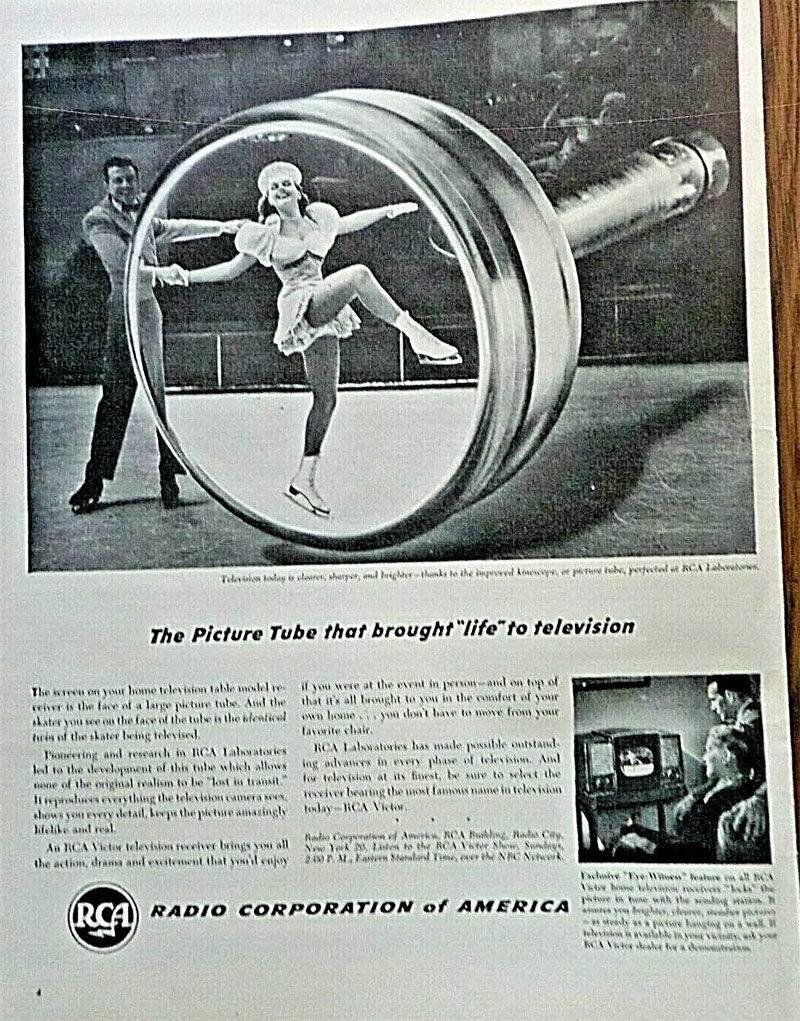
"The Picture Tube
that brought "life" to television," RCA, 1947








